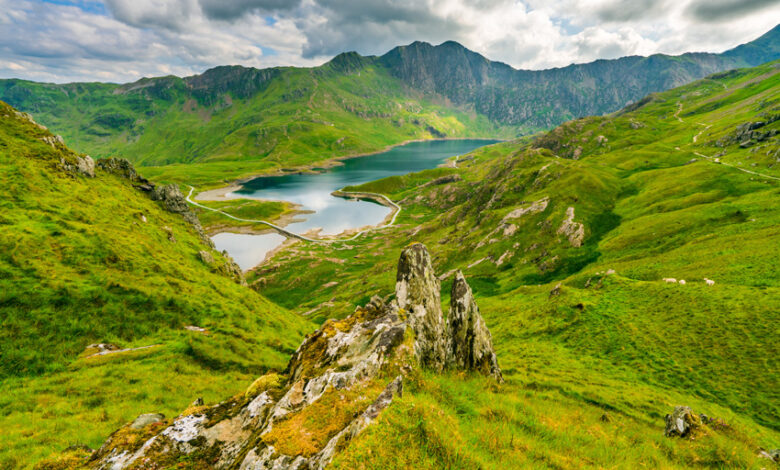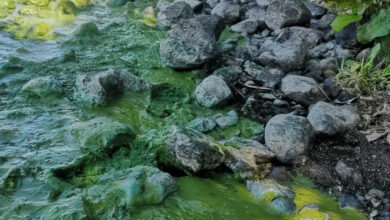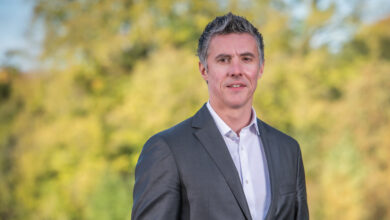Managing Wales’ natural resources

Clare Pillman, Chief Executive of Natural Resources Wales (NRW), talks about the challenges of managing Wales’ natural resources and how she is enabled to do this by strong legislation and a functioning government.
 Pillman contextualises that, growing up in northeast Wales, she knows “what an unjust transition looks like”, recalling how the steel works were closed and the coal mines were abandoned.
Pillman contextualises that, growing up in northeast Wales, she knows “what an unjust transition looks like”, recalling how the steel works were closed and the coal mines were abandoned.
Reflecting on the cost of living and inequality challenges of today, she firmly believes that partners in the public, private, and voluntary sector have the power to bring about a change that is fair, just, and ensures nobody gets left behind.
“We have been living with the legacy of an unjust transition for a very long time. This is not where we want to be this time round,” Pillman says.
NRW was established in April 2013 with a mandate to deliver an integrated approach to managing the environment and natural resources of Wales. In bringing together the functions of the Environment Agency Wales, the Countryside Council for Wales, and the Forestry Commission Wales, NRW became Wales’ largest Government Sponsored Body. Since its formation, this single entity has been using its influence, tools and mechanisms to shape the future of Wales’ approach to natural resource and ecosystem management.
Pillman describes it as a “watershed moment” for environmental policy in Wales.
NRW is now responsible for the management of 8 per cent of Wales’ land mass and manages in the region of 50 per cent of Wales’s nature reserves. It is the nation’s largest timber producer, producing around £40 million worth of timber per year. Pillman further explains that the organisation has “huge amounts of production across the estate and onshore wind on our land”.
Challenges and evolution
Pillman describes the task of merging together different organisations with very different responsibilities and having to deliver significant cost savings has not been without its challenges.
“The varied nature of the work that we do can sometimes lead to debates about our approach,” she says.
However, she says that this is “positive” as “we cannot, as an organisation, retreat to our trenches; we have to reach a decision and reach a point of view. That can be on anything from how the land that we manage is used, where we take a decision, perhaps, to do wind turbines, where we do peatland restoration, where we have commercial timber, where we do naturally-led regeneration.”
Earlier in 2023, NRW launched its Corporate Plan to 2030: Nature and People Thriving Together. It focuses on three wellbeing objectives that will guide its response to the triple threats to the planet. She describes NRW’s vision as “very straightforward” – to see nature recovering, to mitigate and adapt to the climate emergency, and to minimise pollution.
The plan recognises where NRW is best placed to lead the way to meet the 2030 targets for nature and climate with the unique tools and powers it has. But it also stresses the importance of pooling resources and collaborating with partners, sharpening the focus on social and environmental justice to make sure no part of society gets left behind.
Central to realising this vision, according to Pillman, is political support. “Our relationship with government is that we are at arm’s length; which can be difficult for government as we sometimes need to tell them things they do not want to hear. But we are also a key delivery organisation for them.”
Underpinning legislation
Two pieces of legislation, the Wellbeing of Future Generations Act and Environment (Wales) Act 2016 have been key enablers for NRW to work in collaboration with partners.
In the Wellbeing of Future Generations Act, the role of public services boards (PSBs) to work at a local level to deliver for local communities, was enshrined. The PSBs bring together local authorities, health organisations, NRW, and emergency responders to share knowledge and deliver on the issues that matter most at a local level.
“One of the requirements of the Environment (Wales) Act was the requirement for us to publish a State of Natural Resources Report (SoNaRR) – an environmental stocktake which provides powerful evidence to guide Wales’ future path,” Pillman explains. “Alongside that are our area statements which are at a more granular local level and give meaning and relevance to the different requirements of the Welsh environment. The Act also sets out the principles of the sustainable management of natural resources (SMNR), which underpins everything we do as an organisation.”
Pillman points to the future ambitions of NRW to contribute to Wales’ net zero by 2050 ambitions, highlighting that 86 per cent of the organisation’s emissions can be linked to its supply chain. “As a landowner, operator, and zero carbon organisation, we know that we must set an example to others, meeting the highest standards in how we work,” Pillman says.
“Social partnerships and how we procure things can deliver huge change. But we must also endeavour to do more – to radically change the way we live, how we work together, how we think about and plan for the future. With the public sector leading the way, we can quite literally move mountains, and build a thriving economy, vibrant communities, and a more resilient world for current and future generations.”





